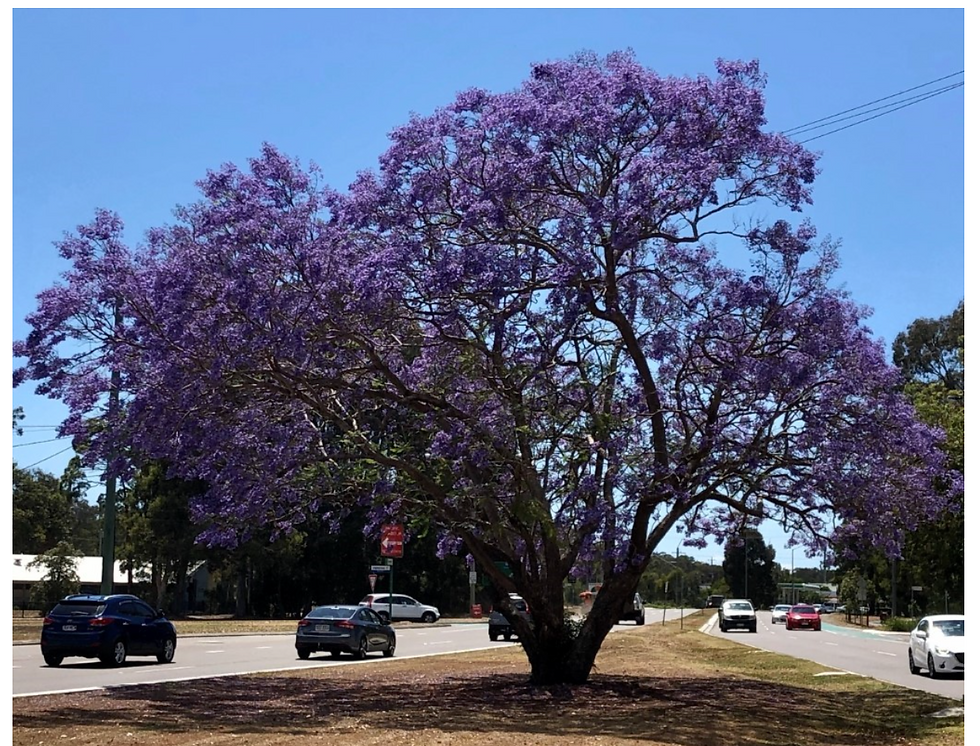By Staff Writer Mozza
Bribie Island and surrounds are currently experiencing the annual jacaranda tree bloom along our familiar streets, in parks, private yards, around ovals and schools.
It is a popular urban myth that, years ago, hospitals gave jacaranda seedlings to new mothers. According to the legend they were encouraged to plant the seedling and watch it grow along with their child. Consequently hundreds of the trees bloom in Queensland at this time of the year.
The trouble is there are no records of hospitals giving away the plants. The popularity of the jacaranda, which is an introduced species from South America, owes more to enterprising horticulturalists than gratuities from medical institutions.
But a major part of the popularity of the plant comes from the way they burst into life at this time of the year, with sprays of purple and blue. The flowering of the jacaranda announces summer is coming. For university students it’s a sign the exam period is starting.
Native to Brazil and Argentina, jacaranda is the name of a genus of about 50 different species of trees with a range of flower colours. The name comes from the Native American Tupi word “yacarana” or “yacaranda” which the Portuguese spelled with a j.
Although there are species that have other colour flowers, the plant most people know is jacaranda mimosifolia — the blue jacaranda.
The Portuguese collected specimens in the 18th century and noted British collector Alan Cunningham, who would later become a government botanist, sent samples from South America to England in 1818. Other parts of the world also introduced the trees, notably South Africa, where the first were planted in the 1820s. They were so abundant in Pretoria it was later dubbed the Jacaranda City.
The first samples in Australia are believed to have arrived in the 1850s. The first to be successfully grown was planted by the superintendent of the Brisbane Botanic Gardens, Walter Hill, in the 1860s. In an 1870 report to the Queensland Legislative Council he said he was having some success growing them “on either side of the gravel path leading from the George St Entrance to the interacting gravel walk”.

Under The Jacaranda by Godfrey R. Rivers in 1903.
Perhaps the most famous of his plantings was captured by artist Godfrey Rivers in his 1903 painting Under The Jacaranda, which hangs in the Queensland Art Gallery. The iconic tree was blown down by a cyclone in 1980.
The popularity of the plant began to soar in Queensland and during the late 19th and early 20th century some councils gave away seedlings as part of beautification schemes. The average lifespan of a jacaranda tree is 50 years old. They can obviously grow a lot longer with some lasting well up to 200 years old. They reach maturity in about 20 years and are capable of re-growth if damaged from fresh falling seeds.
Brisbane students have long had a superstition that if you hadn’t started studying by the time the tree blooms you would fail the exams. A similar superstition is held by students, who say if a jacaranda flower falls on your head you will fail the exams, but the curse can be removed if you catch a flower in your right hand.



Comentarios